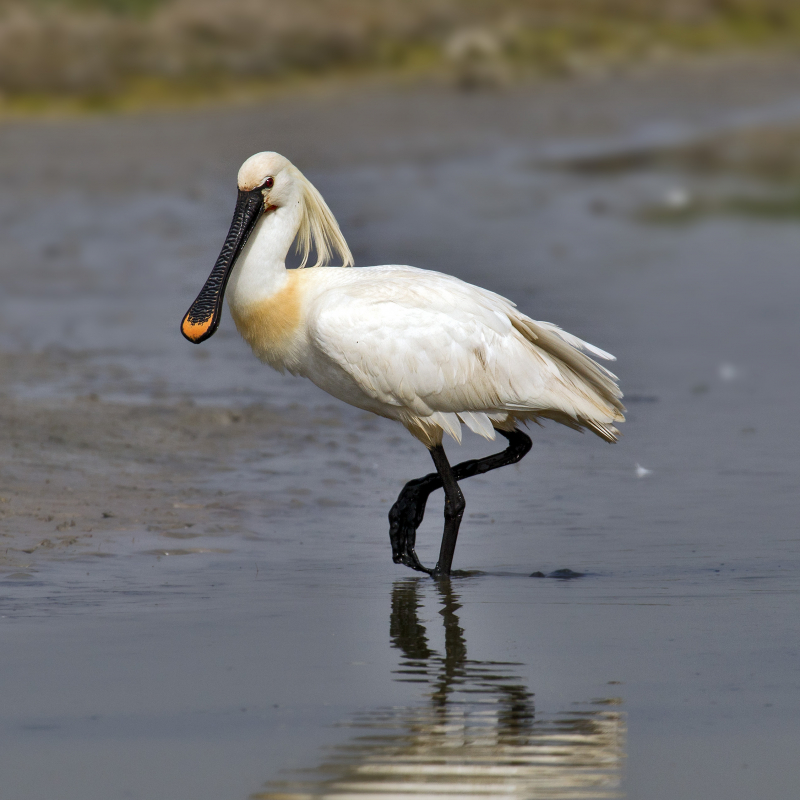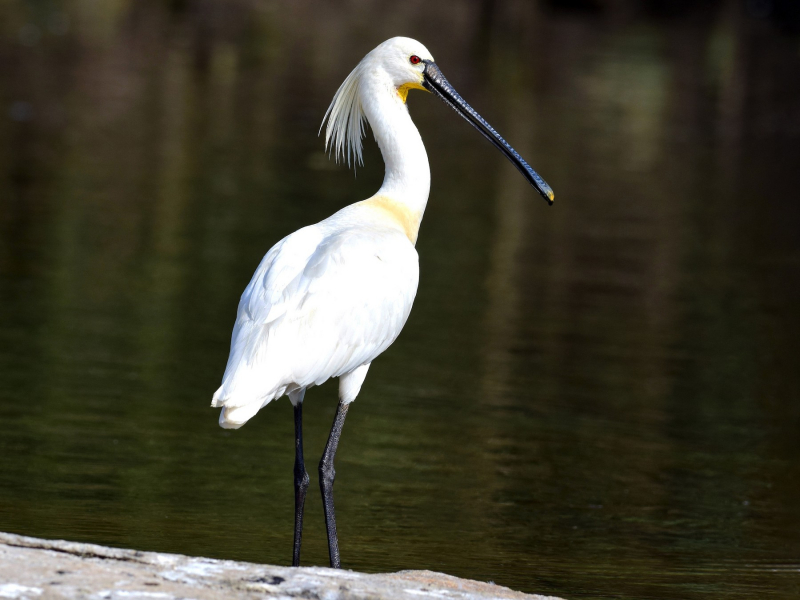Eurasian SpoonBill
The Eurasian Spoonbill (Platalea leucorodia), or common spoonbill, is a wading bird of the ibis and spoonbill family Threskiornithidae. The genus name Platalea is from Latin and means "broad", referring to the distinctive shape of the bill, and leucorodia is from Ancient Greek leukerodios "spoonbill", itself derived from leukos, "white" and erodios "heron". In England it was traditionally known as the "shovelard", a name later used for the Northern Shoveller. The diet consists of aquatic insects, mollusks, newts, crustaceans, worms, leeches, frogs, tadpoles, and small fish up to 10–15 cm long. It may also take algae or small fragments of aquatic plants (although these are possibly ingested accidentally with animal matter).
In the majority of its range, this species is virtually identical. The breeding bird is entirely white, but for its black bill with a yellow tip, dark legs, and pelican-like yellow breast patch. During the breeding season, it develops a crest. Non-breeders lack the crest and breast patch, and young birds have a pale bill and black tips to their main flight feathers. Unlike herons, spoonbills fly with their necks extended. The African spoonbill, with which it overlaps in the winter, is distinct from the Eurasian spoonbill in that it lacks a crest and has a red face and legs.












